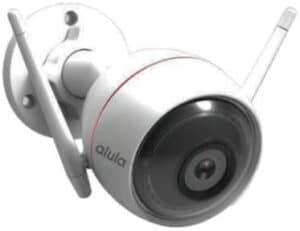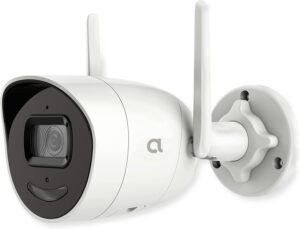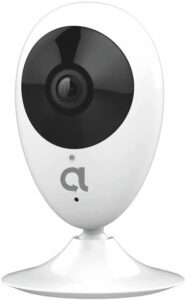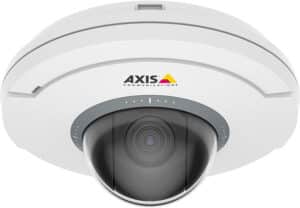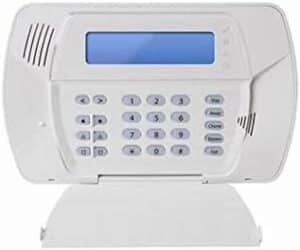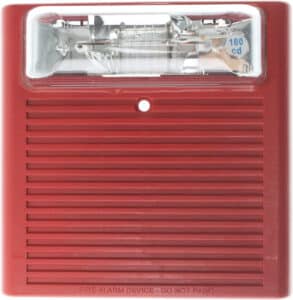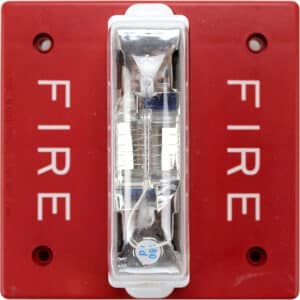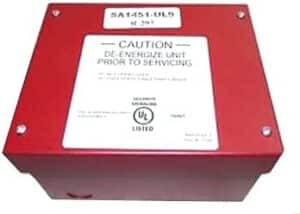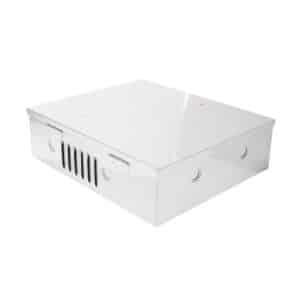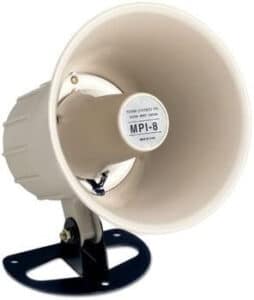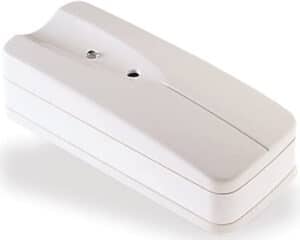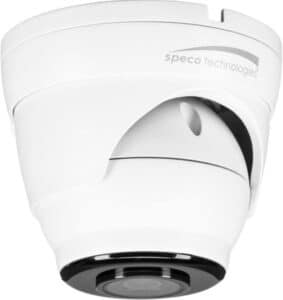The Ultimate DIY Home Security Checklist: How to Secure Your Home on a Budget
Home security is a priority for many homeowners, and for good reason. But with rising costs, it can be difficult to find an affordable home security solution. To help, we’ve put together this ultimate DIY home security checklist, outlining the steps for securing your home on a budget. From installing motion-sensor lights to updating locks and securing windows, this comprehensive guide will help you ensure your home is safe and secure, no matter your budget.
Read on to discover the ultimate DIY home security checklist, and learn how to secure your home without breaking the bank.
Table of Contents
The Importance of Security for Your Home
Having a secure home is essential in ensuring that you and your family are safe. Here are some of the reasons why home security is important:
-
- Provides peace of mind: Knowing that your home is secure gives you and your family peace of mind. Knowing that you’re protected from burglars, fires, and other potential threats helps you rest easier.
-
- Prevents theft: Security systems can help deter thieves from breaking into your home. With security cameras and alarms in place, burglars are less likely to target your home.
-
- Gives you control: Security systems let you keep an eye on your home, even when you’re away. With smart home systems, you can control your lights, locks, and other features from your smartphone.
-
- Protects your valuables: Security systems can help protect your valuables and other belongings. With motion sensors and cameras, you’ll know if someone is trying to break in and you can take action quickly.
These are just some of the reasons why home security is so important. With the right security system, you can ensure that your home is secure and protected.
Ultimate Home Security Checklist
Here is the ultimate checklist that you should follow as a homeowner to keep your home safe:
Assess Your Home’s Security: The DIY Home Security Checklist
Before you can start implementing changes to your home security, you need to understand the current state of your home’s security. This home security checklist will help you identify the most common entry points for burglars, as well as other areas that may need improvement.
Check and Secure Entry Points
Front Door: The front door is the most common entry point for burglars. Ensure your door locks are secure and consider installing a keyless entry system or smart lock for added protection. Additionally, make sure your front door is visible from the street and not obscured by landscaping, as this can prevent potential burglars from easily entering your home.
Sliding Glass Doors: These doors are often targeted by burglars due to their less secure locking mechanisms and hidden location. To better secure your sliding glass doors, consider upgrading the lock, installing a security bar, applying security film, and adding glass-break detectors or door sensors.
Windows: Ensure all windows are locked and consider installing motion detectors or window sensors to alert you to any unauthorized entry. Security film can also be applied to windows to prevent them from shattering.
Garage Doors: Make sure your garage door is secure and consider installing a smart garage door opener that can be controlled through mobile apps for added protection.
Side and Back Doors: Don’t neglect side and back doors, as they can also be targeted by burglars. Ensure these doors are as secure as your front door with strong locks and a keyless entry system or smart lock.
Other Access Points: Don’t forget to secure other access points, such as side doors, basement windows, and pet doors. Make sure all entry points are locked and consider adding motion detectors or security cameras to monitor these areas.
Invest In A Home Security System
A home security system is an essential component of any comprehensive security plan. However, it doesn’t have to be expensive. Consider DIY home security systems that can be easily installed and monitored through mobile apps. Some popular features to look for include motion detectors, security cameras, and smoke and carbon monoxide detectors.
Home Security Cameras: Home security cameras are an effective way to deter would-be burglars and monitor your home remotely. There are many affordable options available, including wired and wireless cameras with features like night vision and mobile app access. When placing cameras, make sure to cover entry points like the front door, sliding doors, and windows[.
Smart Locks and Keyless Entry Systems: Upgrading to smart locks and keyless entry systems can enhance your home’s security while providing added convenience. These locks can be controlled remotely, allowing you to grant temporary access to a family member or service provider. Additionally, smart locks often have built-in alarm systems that will notify you of any unauthorized entry attempts.
Neighborhood Watch Program: Joining or starting a neighborhood watch program is an effective and cost-efficient way to improve your home security. These programs promote communication and cooperation among neighbors, helping to deter and report suspicious activity. Make sure to display neighborhood watch signs and stickers around your home to alert potential burglars that your community is vigilant.
Emergency Escape Plan: Having an emergency escape plan is crucial for keeping your family safe in the event of a break-in or other emergency. Make sure to create a plan that includes multiple escape routes from each room, a designated meeting place outside your home, and regular practice drills.
Smoke Detectors and Carbon Monoxide Detectors: Smoke detectors and carbon monoxide detectors are essential for protecting your family from fires and carbon monoxide poisoning. Make sure to install these devices in all the rooms of your home and test them regularly.
Post Office and Package Security: If you’re going to be away from your home for an extended period, make arrangements with your post office to hold your mail and packages until you return. This will prevent your mailbox from overflowing and make it obvious that you are not home.
Keep Spare Keys Safe: Avoid hiding spare keys outside your home, as this can provide easy access for burglars. Instead, give a spare key to a trusted family member or neighbor who can help in case of an emergency.
Maintain Your Home’s Exterior: A well-maintained exterior can deter would-be burglars, as it signals that the property is well cared for and likely well-secured. Keep your yard tidy and well-lit, and trim any overgrown bushes or trees that could provide cover for intruders.
Install an Alarm System: A monitored alarm system can provide peace of mind and an added layer of protection against burglars. Ensure that any alarm system you install is properly maintained and functioning properly.
Install Motion-Activated Lights: Motion-activated lights are a simple and cost-effective way to help protect your home and deter potential burglars. Install these lights near doors and windows for added security.
Things to Consider Before Installing a Home Security System
Getting the most out of your home security system does not need to be a hassle.
Here are some basic things to consider before installation of your security system:
-
- Consider the most-used areas of your home for security.
- Do you need sensors around doors and windows?
- Do certain rooms sit vacant often?
- Do your cameras need to be monitored?
- Do you have pets, or will the cameras’ presence scare them?
- Have you installed an outlet? (if not, we suggest doing so now)
- Do you have an outlet nearby? (if not, we suggest photographing the outlet before installation)
- Have you confirmed your WiFi connection?
- Do you run wires anywhere near your WiFi connection? Have you enabled two-factor authentication on your router?
- Do you have a backup power supply?
- Do you want to add a separate monitoring service?
- Do you want to add more cameras or sensors?
- Do you have access to a reliable customer service team?
- Do you understand the terms and conditions of your service provider?
Once you have a plan in place, you can begin to install the security system. Make sure to read the instructions carefully and follow the manufacturer’s instructions. Also, if you need help with installation, you may want to contact a professional to ensure that the system is installed correctly.
What to Look for When Purchasing Security Cameras?
When it comes to securing your home on a budget, one of the most important steps is to purchase the right security cameras. Here are some key factors to consider when shopping for security cameras:
-
- Price: Make sure to shop around for the best price. Also, don’t forget to factor in installation costs and other associated fees.
-
- Quality: Look for cameras with good-quality lenses and sensors to ensure clear images and videos.
-
- Location: Consider the location of the cameras when selecting them. Make sure they are placed in strategic locations for maximum coverage and that they are not too visible to potential intruders.
-
- Features: Look for cameras with features such as motion detection, night vision, and two-way audio. Also, consider if you want cameras with built-in storage or if you’ll be using cloud storage.
-
- Reliability: Make sure to research the brand and look for customer reviews to ensure that the security cameras are reliable and of good quality.
-
- Installation: Make sure to research the installation process and how easy it is to set up the security cameras. If you are not comfortable doing it yourself, make sure to hire a professional installer.
How to Mount Security Cameras
Mounting security cameras can be an intimidating task, but it doesn’t have to be! Here are a few tips to help make the process easier and ensure your security cameras are properly installed:
-
- Decide where you would like to install your security cameras. Consider their range and the coverage needed for your home.
-
- Make sure the mounting location is easily accessible and within reach of an electrical outlet.
-
- Make sure the mounting location is not too close to other objects or surfaces that could create a blind spot or weaken the camera’s signal.
-
- When mounting the camera, use the appropriate screwdriver and hardware to ensure it is securely in place.
Once the camera is mounted, connect it to the power source and configure the settings according to your needs. If you need help doing it yourself, make sure to hire a professional installer.
How to Set up a Security Camera System on a Home Network
Setting up a security camera system on a home network can be an effective way to monitor your home from anywhere. With the right setup, you can keep an eye on your home and make sure everything is safe. Here’s how to get started:
-
- Decide on the type of security camera system you need. There are several types of cameras available, so it’s important to choose the right one for your needs.
-
- Buy the right equipment. Make sure you have the right cameras, hardware, and software for your system.
-
- Connect the cameras to your home network. This will allow you to access the cameras remotely.
-
- Set up the software and configure the settings. Make sure you have the right settings to get the most out of your system.
-
- Monitor your home. Once everything is set up, you can start monitoring your home from anywhere.
Setting up a security camera system on a home network can be a great way to keep your home safe. With the right setup and equipment, you can monitor your home from anywhere and make sure everything is safe.
Conclusion
As you can see, securing your home on a budget can be done with the right DIY home security checklist. You have the tools and knowledge to protect your family and your home, but you’ll need the right products. Xcessory Zone offers the perfect DIY home security solutions to complete your checklist, with a wide selection of products to fit any budget.
Shop now and give yourself and your family the peace of mind that comes with being secure in your own home. Don’t wait another day – take action now and make sure your home is as secure as it can be.
FAQs
What is a good DIY security system?
Protecting your house without a security system can be a daunting task. It’s important to keep in mind that break-ins can happen to anyone, so it’s essential to take proactive steps to deter burglars. One of the easiest and most effective ways to protect your house is to identify and secure possible entry points. Check your windows and door locks and make sure they are functioning properly.
Consider installing motion-sensor lights outside, as convicted burglars are less likely to try and break in when they know they’ll be seen. Lastly, make sure to keep your house well-lit and invest in a good home alarm system. With these simple steps, you can protect your house without a security system.
How can I make sure my home is secure at night?
To ensure that your home is secure at night, it is essential to take certain steps. Start by making sure all windows and sliding doors are locked.
Check that all doors and windows are properly shut and locked every night. You can also install motion-sensor lighting on your property to deter intruders.
Additionally, it’s important to have a working fire extinguisher in your home in case of an emergency. Lastly, install a security system and make sure to turn it on when you go to bed.
How often should I review and update my DIY home security checklist?
It’s important to review and update your DIY home security checklist on a regular basis. How often you do this will depend on the specific items on your list, as well as how quickly changes in technology and security trends occur. Generally speaking, it’s a good idea to review your checklist every six months or so.
If you have any items on your checklist that are particularly sensitive, such as passwords or access codes, it’s best to review them more frequently—ideally every few months. This is especially true if you’ve recently moved into a new home or changed any of the locks or alarm systems. It’s also important to keep an eye out for new security threats and updates in technology that may affect your home security plan.
Finally, make sure all members of your household are aware of the checklist and understand their roles in keeping your home secure.
Meet Our Partners!




